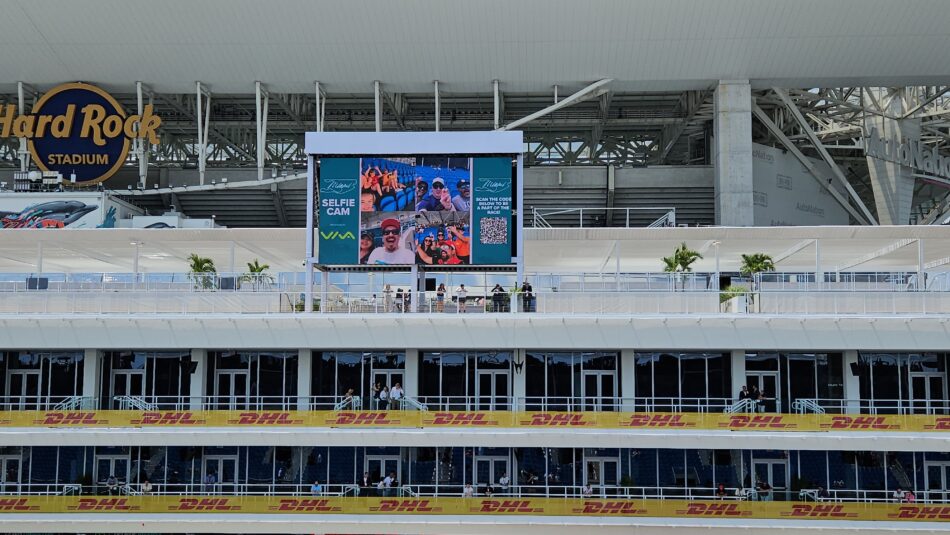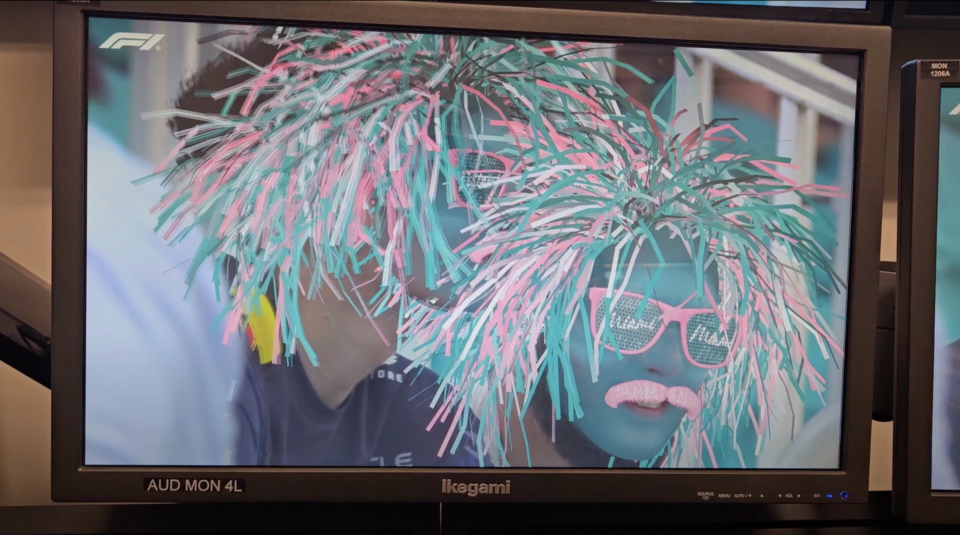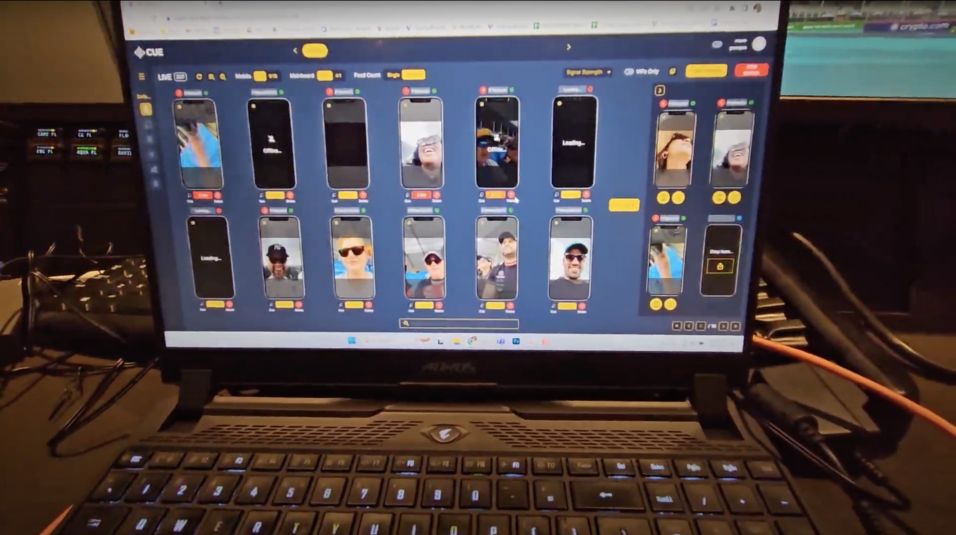SVG Sit-Down: CUE Audio’s Kyle Campbell Puts Fans at the Center of the In-Venue Experience
The data-over-audio provider’s most recent effort was for Formula 1’s Miami Grand Prix
Story Highlights
Going to the ballpark, stadium, or arena is a communal activity: cheering for the home team, jeering opposing players, coming together to enjoy a sports event. These days, that shared experience is turning into an event focused on the fans in the stands. Enabling these in-venue moments through mobile engagement is the aim of CUE Audio, a provider of data-over-audio, fan-first technology. Founded in 2017 by Jameson Radar and Ira Akers, the company started off in collegiate athletics with the University of Nebraska, University of Wisconsin, and Marquette University and has expanded to professional sports in all leagues, including NHL Western Conference Finalist Vegas Golden Knights and NFL AFC Conference Finalist Cincinnati Bengals, and to global events like the 2023 World Baseball Classic in Miami. CUE Audio Experience Guru Kyle Campbell sat down with SVG to discuss his team’s effort at the recent Formula 1 Miami Grand Prix, ways in which game-day productions extend beyond the venue, and more.
For anyone who isn’t familiar with CUE Audio, what are some of the solutions it provides?
Previously, we were focused only on our cellphone light shows using our acoustic modem, but we made a transition through an acquisition to be more videoboard-focused. Our cellphone light shows require an app, but we’re mostly web-based, so we’re able to flip around any of our activations in a matter of days if we need to. We want to engage [with fans] through their phones as well as with our partners through sponsorable inventory. We’re also rewarding our participants with a prize or a chance to win something. We want these opportunities to be beneficial for every party involved.
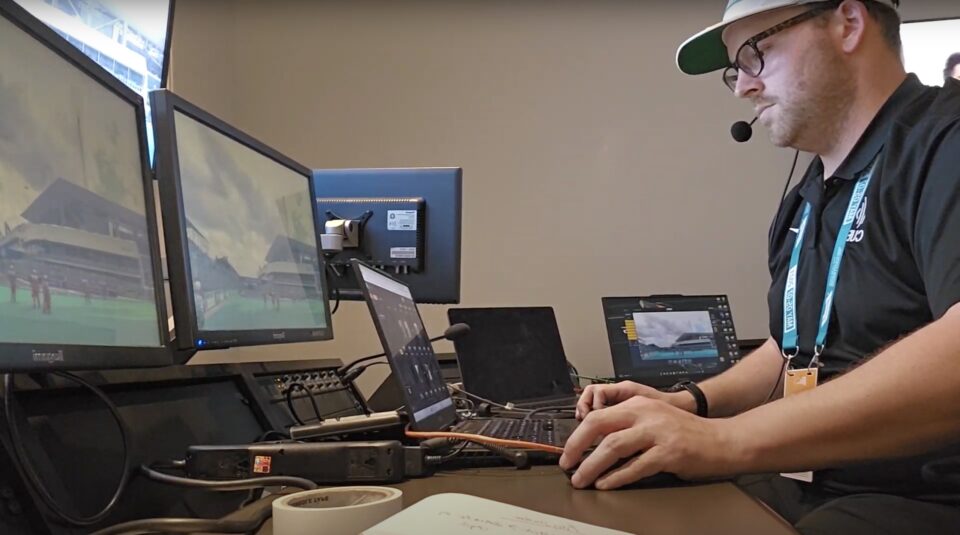
CUE Audio’s Kyle Campbell runs the F1 Miami Grand Prix show from inside the Hard Rock Stadium control room.
What is the setup in the control room for FanSee! or the light show?
There’s a laptop or desktop that is part of the installation that we provide, but it’s truly plug-and-play since it’s an Ethernet connection. After that, it’s a second screen to see the actual output of the videos that are coming in, taking the output and creating a video input for your frame sync into your video server. That file can then be controlled through a production switcher.
The way the light show works is taking the audio of the intro video that our client is delivering and uploading that to our web portal. The client is able to customize all the on-screen content, and we program all the flashes and triggers on our end. Once they download the .wav file [that we created], they’re able to embed it right back onto their video. As long as the phone is in our app, the flashes on the fans’ devices match up with the sound in the venue. As one of the programmers, I get to try to make the lights look the way the music feels.
You were previously with the New Orleans Saints and Pelicans. How do you use your previous work experience as an advantage?
Working with all these teams has been interesting because everyone operates differently. We’ve had to be adaptable and step outside of our comfort zone. Whether it’s FanSee!, our light show, or trivia, we also need to be respectful of how we integrate our offerings into their production space. I’ve stressed to my colleagues that we need to think of what it’s like coming from their perspective.
Some people may think that production crews show up and everything works, but that’s not the reality. It’s about connecting with the right people — both engineers and production personnel — ahead of time to make that everything’s working properly in their system. Ultimately, we want our elements to work without affecting their run of show.
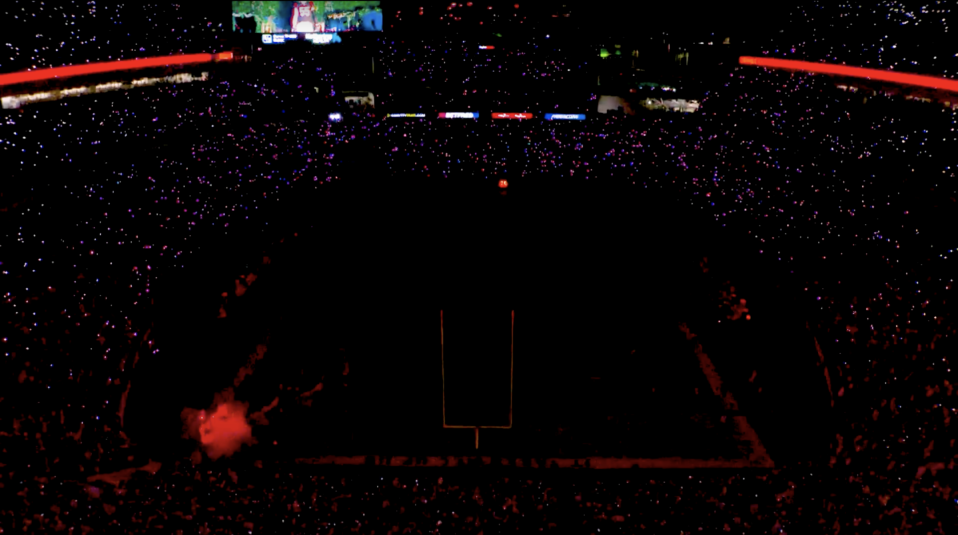
CUE Audio lit up Cincinnati’s Paycor Stadium before the Bengals’ NFL Wild Card matchup with the Baltimore Ravens on Jan. 15.
Another advantage would be the relationships that I have. For example, I’m able to create a partnership with a handful of people that I know in the NFL. That part has been helpful because it feels like friends doing business instead of two unfamiliar individuals doing business.
How do you work with in-venue crews to optimize these workflows?
FanSee! is less than a year old. We were running the beta version with the Los Angeles Chargers last year in SoFi Stadium. Since it’s relatively new, we want to continuously innovate this product, and our development team does an amazing job of taking feedback internally or from our clients. If a specific team wants to do something differently, we take that advice and turn it around quickly for our next update.
The biggest one would be the onsite demo that we did in February with Atlanta United. They had the idea of making the button that fans would press to go live a little bigger because it was the same size as everything else. Four days later, we had a new version that had a larger, more obvious live button. For in-venue crews, it’s nice to feel like there’s some ownership in this process.
Can you speak on the diversity of your company’s portfolio?
The first event I ever sold was a 400-person eyelash conference in Los Angeles last year. The very next week, we got the San Francisco 49ers as my first sports-centric client. I always say that [your material] could be seen by either 1,200 people at a conference or by 70,000-100,000 people at a sports venue. In reference to leveraging relationships, I was talking with the 49ers before I officially started and [Senior Director, Game Presentation and Live Events,] Laura Johnson showed interest. I also knew [Denver Broncos Game Entertainment Manager] Liz Coates was very interested as well. It was nice talking shop, and then, once I signed with CUE Audio officially, I hit the ground running with them.
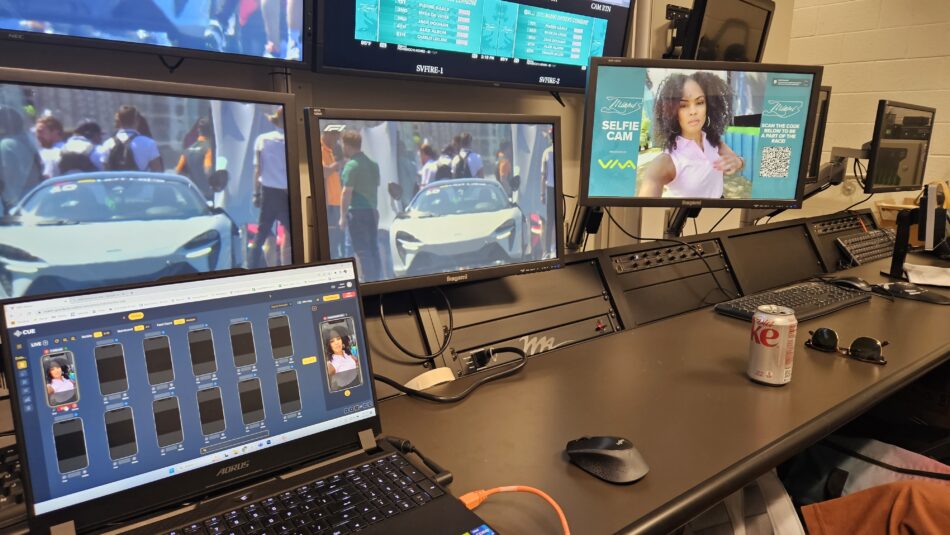
The CUE Audio setup in the control room at Miami’s Hard Rock Stadium featured a laptop and a separate video monitor.
A more recent, and one of the company’s biggest clients, was the Formula 1 Miami Grand Prix May 5-7. How successful was FanSee! at that event?
F1 was a really big deal for us since it was the largest and fastest event that we’ve ever done. 270,000 people over the course of the weekend was a testament to how our product can stand up in a crowd of that size. I was in talks with the Miami Dolphins about activations this season, and I remember [Executive Producer, Entertainment and Events] John Gandy saying how much they loved our stuff but wanted to see a demo of it first. About six weeks before the race, I had the idea of demoing it during the Miami Grand Prix as an opportunity to get it in front of a different audience. We ended up running FanSee! a bunch of times, and that led to our putting up some pretty crazy numbers.
It was interesting to see how interest grew [over the three-day event]. On Friday, we had over 3,100 people come in, and we were able to display almost 400 people to the videoboards. On Saturday, we had nearly 2,300 people for another 400 people on the videoboards. On Sunday, they pushed doors opening by an hour. They had a ton of sponsorship inventory that they had to get in, and we were told going into the day that the only one [of our solutions] scheduled was Selfie Cam. We ended up running it six times because they saw how easy it was to run our stuff.
In total, we had almost 10,000 people scan in, and we put up nearly 12% of those to the videoboards. The reason we were able to do that was the multiple outputs that we have the ability to do. We can do up to four people at once and fly through as many as we can: if we put up Selfie Cam 20 times in one hit, we’re realistically showing 80 people. From a sponsorship standpoint, it was great branding for everyone to see.
How does the timing of the F1 race work with CUE Audio’s in-venue elements?
[FanSee!] was used as filler between events. For instance, doors would open, and we’d run it for six to seven minutes, the drivers would go for a run, and we’d do it again to fill time until the next practice or qualifying. [The videoboard show] would sometimes go to a concert at a different stage, and we’d throw up Selfie Cam if we needed to during that [transition] time. The international video feed is displayed on the videoboards during the race, but it was something fun to give the fans and the production crew during those downtimes.
When [Director, Accounts and Activation,] Jamie [Louden] was operating [FanSee!], I went out to the crowd to take some photos and videos, and there were audible reactions from people seeing themselves on the videoboard. It was cool to see and hear people paying attention to what’s going on because there’s a lot of other things happening at a Formula 1 race.
How are you helping teams expand their marketing efforts through data capture?
We worked with the Detroit Red Wings during the regular season for 10 games, and they generated impressive numbers in regard to data collection. 21,149 fans played FanSee! during that stretch, and they were able to display 1,146 people on the videoboard. They were also able to issue a coupon for a free donut at Tim Horton’s. Of those 21,785, they collected 5,670 phone numbers, [compared with] a previous high of 1,051 phone numbers.
How are you extending the reach of the show by bringing in people from outside the venue?
Since it’s a QR code, you can text it to other people and say, “Hey, join in from home.” [With] NBA League Pass, the videoboard feed [is shown] during commercials. We’ve seen people scan in from home and join the videoboard feed from their home. We can sort by signal strength [and] weed out the ones who don’t have the strongest of signals. We also have a VIP feature [with] a separate QR code that we can give to certain people to tag them into the system. If there are celebrities, influencers, former players, team executives, sponsorship representatives, or friends and family, they’re put into this VIP section and can be included on the videoboard.
How can CUE Audio improve and evolve moving forward?
I think, in a great way, it could look completely different from what it is now. We have an awesome product, but truly, with every update released, something new is coming out. With the different shapes of videoboards, the varying sizes of venues, and the manufacturers and vendors that develop technology with different inputs, we want to make sure that we can cater to everybody’s setup.
There’s not a one-size-fits-all approach. The Saints’ videoboard is 32:9, so a blanket 16:9 output wouldn’t make sense. Other places — like M&T Bank Stadium with the Baltimore Ravens, Lincoln Financial Field with the Philadelphia Eagles, or Mercedes-Benz Stadium with the Atlanta Falcons — are also not doing standard 16:9. There has to be more customization to be able to make it fit your boards and your production.
This interview has been edited for length and clarity.
